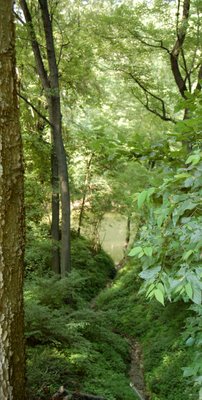Glenwood Park was inaugurated to be a resort area, a place for recreation and entertainment, but it also became a source for culture and education when Chautauqua was in session.
During the year the park opened, 1903, Dr. John Baldwin of Jeffersonville, envisioned the Park as an ideal location in which to introduce Chautauqua to the surrounding area. He, with 10 other prominent men from New Albany and Jeffersonville formed the Chautauqua Association.
Chautauqua was a traveling institution that flowered in the late 19th and early 20th Century, providing education, concerts, readings, dramatic performances, even magicians. It was founded in Chautauqua, New York – hence the name – and most often presented outdoors or in a tent. August 5 – 14, 1904, one year after the Park opened, saw our first Chautauqua, the beginning of a golden age of culture.
William Jennings Bryan, the silver tongued orator, and three times unsuccessful candidate for President of the United States opened the ten day assembly. Also on that first series was May Wright Sewell, one of the prominent women of the day in the country. At various times in the 1890’s she had served as the President of the National Council of Women, President of the International Council of Women, and Chairman of the Executive Committee of the Women’s Suffrage Association.
As was usual in the Chautauqua movement local groups of merit would also be included, and that year The Treble Clef Club, a woman’s singing organization under the direction of Mrs. Henry Terstegge appeared one evening as part of a Grand Concert along with the Cleveland Ladies Orchestra and a noted female singer.
A noted magician and his company provided great entertainment for both young and old. But perhaps the most exciting presentation that year was the Edison Projectoscope, with scenes projected on canvas, some with figures in motion.
The 14 days that August were a huge success and every year thereafter through 1916 the Fall Cities and surrounding towns eagerly anticipated and experienced a happy, informative, entertaining vacation lifestyle in beautiful Glenwood Park.
A large tent seating 3000 (see below) and equipped with electric fans was erected in the athletic field, beyond the ball diamond, toward the creek. An area was set aside in the Park for “Tent City” (directly below the tent). Families would rent tents and camp out for the duration of the assembly. Clubs and organizations would have a tent and townspeople would rent one as a place of rest between programs. Wood floors could be contracted for with the park carpenters and stools, comforts, blankets could be rented. A list of boarding houses and hotels was available for those coming from the surrounding towns and not wishing to camp out.

A dining room would serve meals, but grocers would deliver orders placed by telephone on the grounds. Mail would be delivered daily if addressed care of A. Heimburger, Superintendent of the Chautauqua Association. Special police would guard the grounds day and night. Bells would announce the time of programs afternoon and night. At 11:00pm bells requested peace and quiet until 6:00am.
Chautauqua brought many prominent, nationally known speakers to Glenwood – Eugene Debs, the Socialist, Billy Sunday, the Evangelist, men running for State and National Office. Charles Fairbanks, a former Vice President of the United States, made a hit when he turned over the $200 check handed him to St. Edwards Hospital. He even refused to accept expense money. No doubt he was given the Chautauqua salute, instead of applause one showed appreciation by waving a handkerchief.
At times Opera Companies and Shakespeare groups added a touch of high culture to the programs.
During its hey-day our Chautauqua was thought to be the 3rd largest in the country, due to its size and number of people attending.
1916 saw the end of annual Chautauqua in Glenwood Park. There were financial troubles and the war clouds were gathering in Europe. An attempt was made to revive it after the war. In 1922 a 10 day assembly was held, July 29 though August 7. For weeks the papers carried glowing articles about the excellent groups and speakers to be presented, William Jennings Bryan among them, but that was the last of the Chautauqua in Glenwood.
Chautauqua was certainly a golden age in Our History in New Albany. I hope you enjoy reading this as much as I did.
This is the view today from Glenwood Court looking towards Silver Creek and the approximate location of the Chautauqua tent.




1 comment:
Hi Shirley - this was some fun research. If you liked this you should mark your calendar for Aug 22nd, 7pm at the library - for the Floyd County Historical Society meeting.
The topic will be neighborhood groceries in New Albany. That should be another interesting glimpse into out past.
Post a Comment